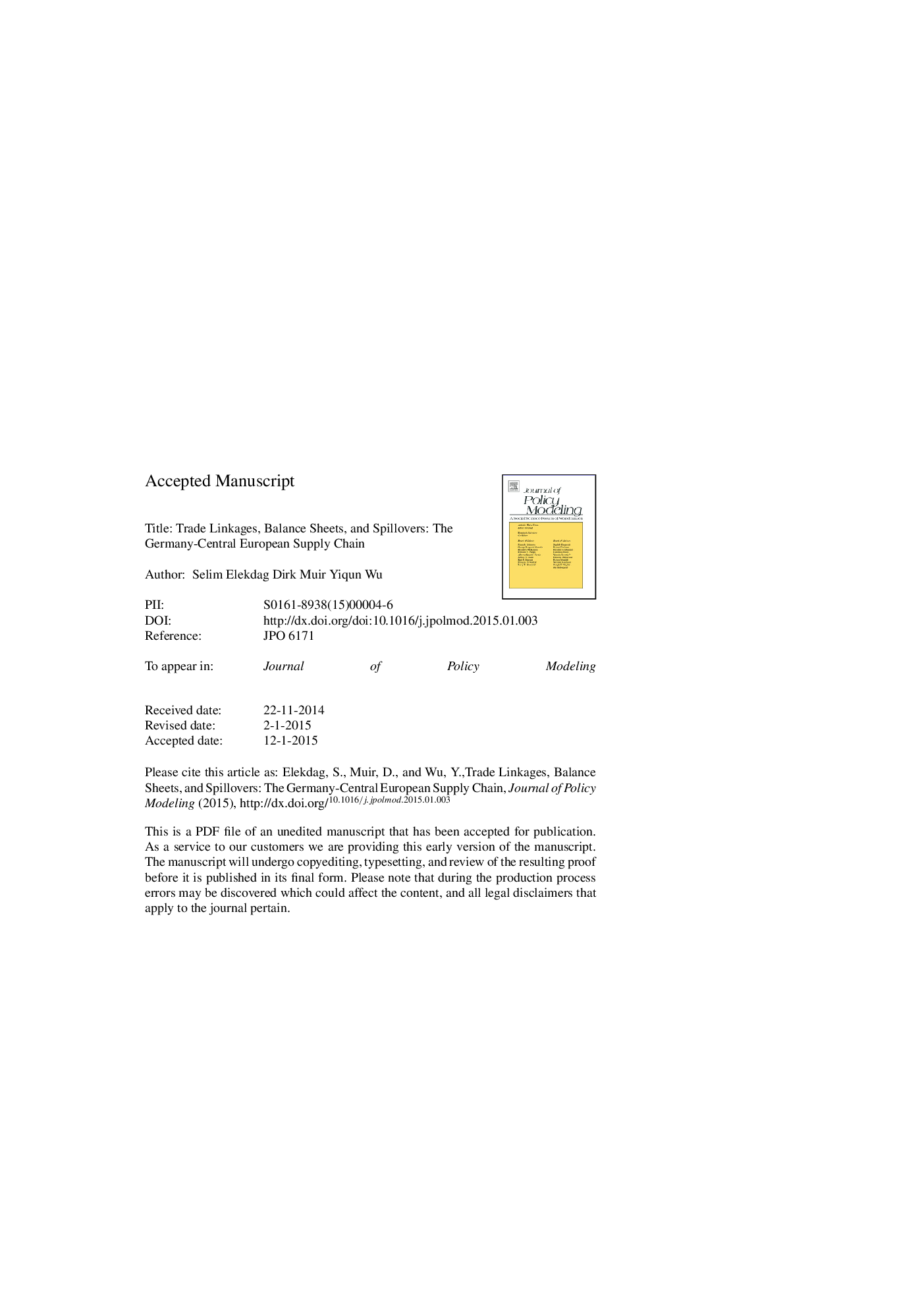| Article ID | Journal | Published Year | Pages | File Type |
|---|---|---|---|---|
| 10479153 | Journal of Policy Modeling | 2015 | 23 Pages |
Abstract
Germany and the Czech Republic, Hungary, Poland, and Slovakia (the CE4) have been in a process of deepening economic integration which has lead to the development of a dynamic supply chain within Europe-the Germany-Central European Supply Chain (GCESC). Model-based simulations suggest two key policy implications: first, as a reflection of strengthening trade linkages, German fiscal spillovers (stemming from higher public consumption) to the CE4 and more broadly to the rest of the euro area, have increased over time, but are still relatively small. This is explained by the supply chain nature of trade integration: final demand in Germany is not necessarily the main determinant of CE4 exports to Germany. Second, increased trade openness in both Germany and the CE4 implies a greater exposure of the GCESC to global shocks. However, owing to its strong fundamentals-including sound balance sheets and its safe haven status-Germany plays the role of a regional anchor of stability by better absorbing shocks from other trading partners instead of amplifying their transmission across the GCESC.
Keywords
Related Topics
Social Sciences and Humanities
Economics, Econometrics and Finance
Economics and Econometrics
Authors
Selim Elekdag, Dirk Muir, Yiqun Wu,
